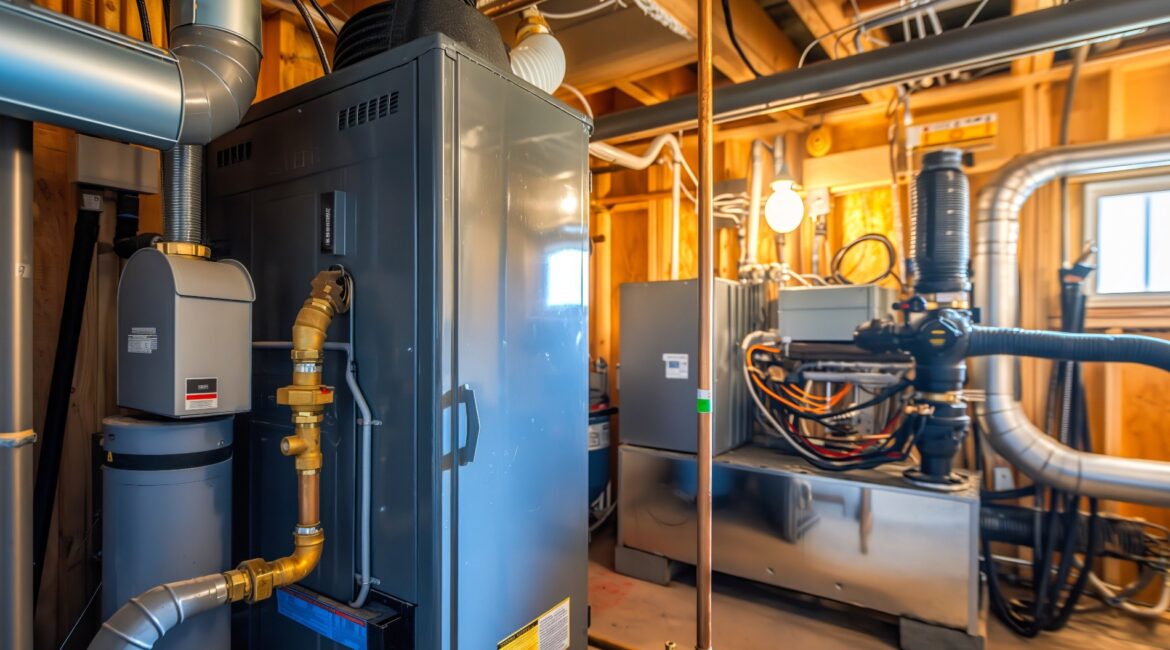A well-functioning furnace is crucial for maintaining a cozy and warm home during colder months. However, furnaces can sometimes experience problems that disrupt their performance. Recognizing the signs and understanding the causes of these issues can help homeowners seek timely repairs, ensuring the furnace continues to operate smoothly.
Common Furnace Problems and Their Causes
Homeowners may face various furnace problems that can affect their heating systems’ performance and efficiency. Understanding these issues and their causes helps in identifying when to seek professional assistance.
1. No Heat or Inadequate Heat: One common issue is when the furnace produces no heat or insufficient heat. This can be caused by a faulty thermostat, blocked air filters, or issues with the pilot light or ignition system.
2. Frequent Cycling: When your furnace turns on and off too frequently, it can strain the system, leading to wear and tear. This problem may stem from a malfunctioning thermostat, dirty air filters, or an oversized heating unit.
3. Unusual Noises: Strange sounds like banging, rattling, or squealing from the furnace can indicate mechanical issues. Loose or damaged components, such as belts and bearings, are often the culprits.
4. Blowing Cold Air: A furnace that blows cold air instead of warm air can be frustrating. This issue might be due to problems with the pilot light, gas supply, or a malfunctioning thermostat.
5. Pilot Light or Ignition Issues: Problems with the pilot light or ignition system can result in the furnace failing to start. Dirt buildup or a faulty sensor might be the cause.
Recognizing these common furnace problems early can prevent more severe damage and ensure your home stays warm and comfortable.
Diagnostic Techniques Used by Our Professionals
Our professionals use several diagnostic techniques to identify and address furnace issues. These methods help pinpoint the root cause of the problem, allowing for effective and efficient repairs.
1. Visual Inspection: Our technicians begin with a thorough visual inspection of the furnace, checking components like the heat exchanger, blower motor, and belts for signs of wear or damage.
2. Thermostat Check: The thermostat is a crucial part of the heating system. Our experts evaluate its settings and functionality to ensure it communicates properly with the furnace.
3. Air Filter Examination: Clean air filters are vital for efficient furnace operation. Our professionals check the filters for dirt and debris, which can restrict airflow and cause heating problems.
4. Electrical Connections: Loose or faulty electrical connections can cause furnace malfunctions. Our technicians inspect all wiring and connections to ensure they are secure and functioning correctly.
5. Gas Pressure and Burner Assessment: For gas furnaces, our experts assess the gas pressure and inspect the burners for proper ignition and combustion.
6. Diagnostic Tools: Advanced diagnostic tools, such as multimeters and combustion analyzers, are used to measure electrical outputs, gas pressure, and combustion efficiency.
By utilizing these diagnostic techniques, our professionals can efficiently identify and resolve furnace issues, ensuring your heating system operates at its best.
Step-by-Step Furnace Repair Process
Our professionals follow a systematic approach to ensure effective furnace repairs. This process guarantees that all issues are addressed and your furnace operates efficiently again.
1. Initial Assessment: Our technicians conduct a thorough initial assessment to understand the problem. This includes checking the furnace’s general condition and any visible issues.
2. Safety Precautions: Safety is a priority. Our professionals shut off the furnace and disconnect power to ensure a safe working environment.
3. Troubleshooting: Using the diagnostic techniques mentioned earlier, our technicians pinpoint the exact cause of the problem. This might involve testing components, checking gas pressure, or examining electrical connections.
4. Component Replacement or Repair: Once the issue is identified, our professionals decide whether components need to be repaired or replaced. This could involve changing filters, fixing pilot lights, or replacing worn-out parts.
5. Reassembly and Calibration: After repairing or replacing components, our technicians reassemble the furnace and perform necessary calibrations. This ensures the system functions correctly.
6. Testing: Finally, our professionals test the furnace to ensure it operates smoothly and efficiently. They check for proper heat output, correct thermostat function, and any unusual noises.
By following this detailed process, we guarantee that your furnace will be restored to optimal condition.
Preventive Measures for Longevity and Efficiency
To keep your furnace running efficiently and extend its lifespan, regular maintenance and preventive measures are essential. Here are some steps that can help:
1. Regular Inspections: Schedule annual inspections with our professionals. They can identify and fix minor issues before they become major problems.
2. Change Air Filters: Regularly replacing air filters ensures proper airflow and prevents the system from overworking. Ideally, filters should be changed every 1-3 months.
3. Clean Vents and Ducts: Clean vents and ducts ensure efficient airflow. Blocked ducts can strain your furnace, reducing its efficiency and lifespan.
4. Check Thermostat Settings: Ensure your thermostat is set correctly and functions properly. An inaccurate thermostat can cause the furnace to work unnecessarily hard.
5. Lubricate Moving Parts: Lubricate components like motors and bearings to reduce friction and wear. This prevents future breakdowns and extends the life of your furnace.
6. Monitor and Address Unusual Noises: Pay attention to any unusual noises coming from your furnace. Addressing these early can prevent larger issues down the line.
By implementing these preventive measures, you can maintain your furnace’s efficiency and ensure it serves your home for years to come.
Conclusion
A well-maintained furnace is vital for keeping your home warm during the colder months. Understanding common furnace problems, how our professionals diagnose issues, and the detailed repair process can help you stay informed about your heating system’s condition. Taking preventive measures can maintain your furnace’s efficiency and extend its lifespan, giving you peace of mind.
If you notice any issues with your furnace or need routine maintenance, don’t hesitate to reach out to us. Our experienced professionals at Bears Home Solutions are ready to provide top-notch furnace repair services in Fargo. Contact us today to schedule an appointment and ensure your home stays comfortable all year round.

